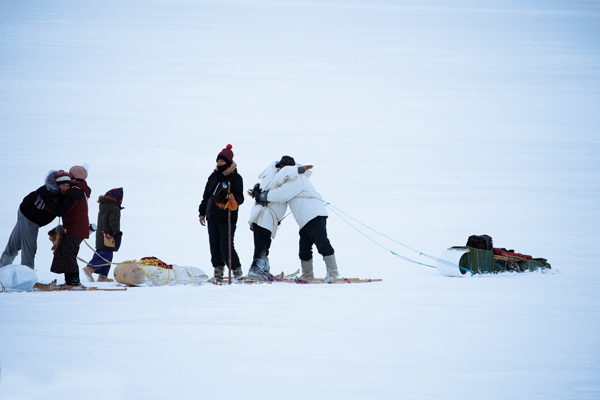History
In 1975, the Grand Council of Cree signed the James Bay Northern Québec Agreement (JBNQA) with the objective of ensuring that the traditional activities of the Eeyou/Eenou continue to be exercised without binding restrictions. Three years later, the Cree Trappers’ Association (CTA) was incorporated as a not-for-profit organization in accordance with the agreement.
On February 7, 2002, the Crees signed the Agreement respecting a New Relationship between the Cree Nation and the Government of Quebec. Specifically, it outlines the obligations of Québec and the Société d’énergie de la Baie-James with regard to the implementation and application of the Cree Trappers’ Association.
On July 16, 2007, the Crees signed the Agreement concerning a New Relationship between the Government of Canada and the Crees of Eeyou Istchee. This agreement seeks to resolve disputes from the JBNQA on outstanding obligations of the federal government from the last 30 years, as well as to secure a mutual agreement between the parties on obligations for the next 20 years.
More precisely, Chapter 4.11 of this agreement outlines the assumption of obligations by Canada to the Cree Trappers’ Association, and certain other associations, by the Cree Nation, ensuring continuity for the years to come. The importance of protecting the uniqueness and distinctiveness of Eeyou/Eenou trappers was again reaffirmed by the Paix des Braves signed in 2008.
The Eeyou Marine Region (EMR) Land Claims Agreement (“Offshore Agreement”) is the conclusion of negotiations on the rights and obligations of the Crees and Canada in the offshore area of Eeyou Istchee, which were initiated from 1974 to 1977. In 1998, the Federal Government was in the process of negotiating with the Nunavik Inuit of northern Québec for an agreement to address Inuit rights in their respective offshore area. The Crees felt that this was the appropriate time to negotiate and address their own rights over offshore areas in Eeyou Istchee. The preliminary discussions of 1998-1999 eventually led to the negotiation and conclusion of the current Offshore Agreement.
It was signed in 2012, and the implementation plan came into force in February 2013. The agreement impacts the five Cree coastal communities of Eeyou Istchee (Whapmagoostui, Chisasibi, Wemindji, Eastmain and Waskaganish). It outlines and recognizes the role of the Cree Trappers’ Association and of the local CTA committees on wildlife management in the Offshore regions, which was not previously recognized in the JBNQA.
 We would like to take this opportunity to salute the hard work of the representatives of the Cree Bands who negotiated the creation of the CTA through the JBNQA forty years ago:
We would like to take this opportunity to salute the hard work of the representatives of the Cree Bands who negotiated the creation of the CTA through the JBNQA forty years ago: